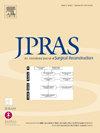减肥后患者的大腿移位术--系统性综述
IF 2
3区 医学
Q2 SURGERY
Journal of Plastic Reconstructive and Aesthetic Surgery
Pub Date : 2024-09-10
DOI:10.1016/j.bjps.2024.09.011
引用次数: 0
摘要
背景1957年,刘易斯(Lewis)首次描述了大腿移位术,它包括通过各种策略对大腿进行重塑。在减肥后大腿提升术(PBTL)中,由于患者的合并症和并发症风险的增加,技术细节变得至关重要。此外,减肥后体重下降会影响大腿,导致大腿组织明显冗余、内侧赘肉、大腿下部畸形、后期赘肉和臀部下垂。本文报告了对 PBTL 手术的系统性综述,并提出了一个全面的分类系统,旨在改善其医疗和手术管理。方法通过使用搜索字符串 "大腿成形术或大腿提升术或减肥后大腿成形术或(大腿提升术和减肥)或(大腿提升术和吸脂)"搜索 PubMed (MEDLINE) 数据库,对 2004 年 5 月至 2024 年 5 月期间的系统性综述(Preferred Reporting Items for Systematic Reviews and Meta-Analyses,PRISMA)进行了系统性综述。对至少有三个临床病例的 PBTL 进行讨论的原创研究符合纳入条件。这些文章发表于过去 20 年。结论由于技术因素和减肥后患者复杂的合并症,PBTL 具有挑战性。对 PBTL 的全面评估有助于根据患者的个人需求选择合适的治疗方法。吸脂辅助大腿内侧提升术结合水平-垂直疤痕和单纯皮肤切除术,对大多数患者来说都是有效且通用的。然而,一些特定病例可能会受益于其他更具创伤性的策略。人工智能是一个越来越受关注的话题,它在 PBTL 中的作用可能会越来越大。本文章由计算机程序翻译,如有差异,请以英文原文为准。
Thighs lift in the post-bariatric patient – A systematic review
Background
Thigh lift, first described by Lewis in 1957, consists of thigh recontouring by various strategies. In post-bariatric thigh lift (PBTL), the technical details become fundamental due to both patient comorbidities and increased risk of complications. Moreover, post-bariatric weight loss affects the thighs, resulting in significant tissue redundancy, inner excess, lower thigh deformity, later excess, and buttocks ptosis. With the present paper, a systematic review of PBTL procedures is reported and a comprehensive classification system is proposed, aiming to improve their medical and surgical management.
Methods
A Preferred Reporting Items for Systematic Reviews and Meta-Analyses (PRISMA) systematic review was carried out by searching the PubMed (MEDLINE) database from May 2004 to May 2024 using the search string “thighplasty OR thigh lift OR post-bariatric thighplasty OR (thigh lift AND weight loss) OR (thigh lift AND liposuction)”. Original studies discussing PBTL with a minimum of three clinical cases were eligible for inclusion.
Results
The final synthesis included 17 articles and 496 patients. The articles were published in the last 20 years. Several papers discussed significant PBTL surgical strategies and technical measures.
Conclusions
PBTL is challenging because of both technical factors and complex comorbidities of post-bariatric patients. This comprehensive assessment of PBTL may help in choosing the appropriate treatment based on a patient’s individual needs. Liposuction-assisted inner thigh lift with combined horizontal-vertical scars and skin-only excision is effective and versatile for most patients. However, select cases may benefit from alternative and more invasive strategies. Artificial intelligence is a topic of growing interest, and it will probably become increasingly relevant in PBTL.
求助全文
通过发布文献求助,成功后即可免费获取论文全文。
去求助
来源期刊
CiteScore
3.10
自引率
11.10%
发文量
578
审稿时长
3.5 months
期刊介绍:
JPRAS An International Journal of Surgical Reconstruction is one of the world''s leading international journals, covering all the reconstructive and aesthetic aspects of plastic surgery.
The journal presents the latest surgical procedures with audit and outcome studies of new and established techniques in plastic surgery including: cleft lip and palate and other heads and neck surgery, hand surgery, lower limb trauma, burns, skin cancer, breast surgery and aesthetic surgery.

 求助内容:
求助内容: 应助结果提醒方式:
应助结果提醒方式:


